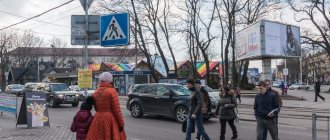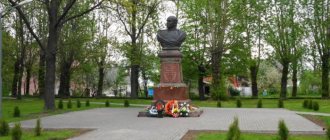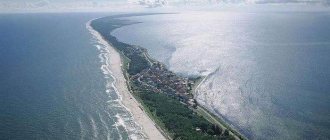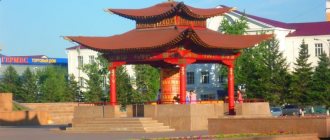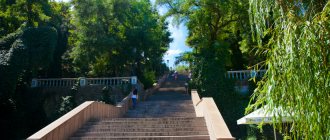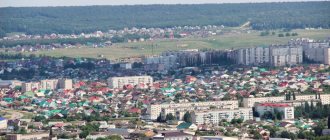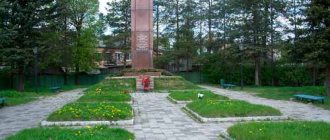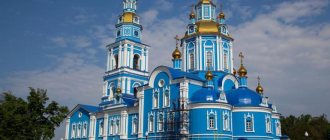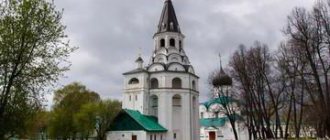Many people, going to the city of Gusev in the Kaliningrad region, have heard little about its attractions. Although there are not many of them here, if you plan your trip in advance and identify the most interesting places, your vacation will be remembered for a long time. By the way, the region belongs to the Russian Federation. It is located outside other constituent entities of the Russian Federation and does not have a single border with them.
Salzburg Church
The church was built of brick in the neoclassical style . Construction took place from 1839 to 1840. Inside there is an organ that was specially brought here from Memel (the territory of present-day Lithuania). In the mid-90s, restoration was carried out. Today it is a functioning Evangelical Lutheran church. It is an object of cultural heritage of the region.
general information
Gusev, a historical city, is located in the region . Before the war it had the German name Gumbinnen. The first written reservation about this area was mentioned in 1732; at that time, the territory of present-day Gusev was settled by settlers from Austria.
Now it is a city engaged in industry. It has a very rich history; both the Prussians and the Germans managed to visit here - this can be seen in the colorful architecture of the pre-war period.
In 1538, in the place where the city of Gusev is now located in the Kaliningrad region, the Kulligkemen people lived. At the end of the 17th century, a large number of people from the Austrian part - Salzburg - went to the settlement of Gumbinnen. There is an opinion that the first peoples of these places appeared at the very dawn of the human era , but the city appeared only in the 18th century and was the central district of the Prussian peoples from the east.
In the 16th century, the appearance of settlements on the river strip “Pisse” is mentioned, which soon began to be called the city of Gumbinnen. 1725 is the official date of the appearance of Gumbinnen.
In February 1759, he began to submit to the Russian government. It was in this city that French commanders developed tactics for further attacks on the Russian Empire. During the Second World War, the Gumbinnen operation was created here to seize the northern territories. In 1947 the city was given the name Gusev.
The local climate is similar to the Baltic, warm in summer and moderate in winter - which is typical for temperate continental climates with transitional features.
Gusev, first of all, is the center of industrial organization:
- Before the start of the war, cars were produced in the city for rural needs.
- It also had a gas plant where the electrical components of Opel cars were assembled.
- They made bricks and furniture products.
- It also has food factories - factories for the production of beer and butter.
- Even with the arrival of the Soviet authorities, the plant continued to function, but due to perestroika, much was lost. And only in our time did factories and production begin to be restored.
Recently, a water purification plant was rebuilt, a television equipment production plant was put into operation, a house-building establishment and a cardboard factory were opened. There are also railway branches in Gusev that belong to the lines of Lithuanian railways.
Moose statue
The elk is a symbol of Gusev; its image is depicted on the city’s coat of arms. The statue was made in Berlin by a student of E. Manet in 1911 and donated to the German city of Gumbinnen (present-day Gusev). After the war, the sculpture was transported to the Kaliningrad Zoo, but was returned back in the spring of 1991. The object is under security.
Location: Pobeda Street.
TOP-3 - where to go in Gusev in 1 day
The tour of Gusev begins with the most “high-profile” attractions, which are symbols of the city and its heritage. You can visit these magnificent places in one day.
Former government building of Gumbinnen
- Address: st. Lenina/st. Moscow.
The government building was built in 1911 and has since become the main symbol of the city. Today his image adorns most souvenirs. The original design of the building included two volumes connected by an arched portal. The central building was crowned with an East Prussian eagle, as well as sculptural compositions symbolizing fertility and fishing.
During the Great Patriotic War, the building first lost its tiled roof and later burned down. Restoration began in 1954, but the building’s historical appearance was returned only in the 2000s.
The architectural monument has been restored down to the smallest detail: the dome once again flaunts on the hipped roof, and the stucco decorations of the facade have been completely recreated. The only difference between the modern building and the original is the tower clock, installed in place of the East Prussian eagle. Currently, the building is occupied by research and production.
Church of All Saints
- Address: ave. Lenina, 42B.
The temple was built in 2010 on the supposed site of the Lutheran Church destroyed during the war years. The building is a masterpiece of Russian architecture style. The central volume is decorated with spinning wheels, shoulder blades, gold zakomaras, and is crowned with a five-domed dome sparkling in the sun. On the drums and frieze you can see subtle patterns in the Slavic manner.
A rectangular projection with tiled pilasters and unusual platbands protrudes from the central volume. It ends with an octagonal tent with kokoshniks.
The tented bell tower, made in imitation of the ancient bell towers of central Russia, attracts no less attention. The entrance to the building is decorated with a massive porch with tiles, a gilded cornice and a gable, which serves as a kind of frame for the fresco of All Saints.
All Saints Church is not only a religious building, but also a memorial one. It is part of a historical complex dedicated to the First World War. Currently, a museum exhibition on the same subject is being prepared in the basement of the temple.
Monument to a forgotten war that changed the course of history
- Coordinates on the map: 54.609101, 22.201752.
One of the most impressive and mournful monuments of Gusev is dedicated to the First World War. August 1914 became a real bloody hell for the residents of the city and was remembered as the most terrible time in its history.
In the center of the granite platform is a young soldier caught in the “wheel of fate.” An elderly mother and a young bride extend their hands to him.
The complex is complemented by silhouette sculptures of soldiers of the Russian and German armies, as well as the “Wheel of War” - a ball woven from barbed wire. It symbolizes the cruelty of the war that swept across the country and crushed people's lives.
Coin Garden
The garden was opened in May 2011. On its territory, along the sidewalks, there are models of coins of Tsarist Russia and the Soviet Union, several hundred times larger than their original size.
Also in the garden in 2012, a stone with a memorial tablet was installed, on which an inscription was engraved, informing the visitor that the history of Gusev can be studied from the coins left by different guests.
Location: Ulyanov street.
Where to take a walk in Gusev - parks and squares
Not a single tourist passes by Gusevsky parks. They attract with their beauty, tranquility, large selection of entertainment and locations for photo shoots.
Coin Garden
- Address: Ulyanov street.
The most unusual Gusev Park was founded in 2012. Walking along the green alleys, you involuntarily pay attention to the models of coins, each of which belongs to a certain historical period of Russia.
Along the paths you can see coins from the times of the Prussian Empire and Tsarist Rus', Soviet rubles and kopecks, as well as modern coins. The coins with minted years are of greatest interest.
Thus, the viewer gets an idea of what kind of money was in use during the Revolution of 1917, the First World War and the Great Patriotic War. This garden is the history of Russia in coins, as the memorial stele installed at the main entrance informs tourists about.
Forest Park "Gresovsky Forest"
- GPS coordinates: 54.586647, 22.167666.
The forest park was artificially created at the beginning of the 20th century. Initially it was called “Fichtenwalde”, which is translated from German as “spruce forest”. In 1935, the so-called “Big Stone” became the main attraction of the park.
It was discovered during the construction of a residential building and was identified as a legacy of the Ice Age. Currently, the “Big Stone” has been moved to the station square as a war memorial.
The modern forest park is famous for its stunning atmosphere of wildlife, clean air and the beauty of centuries-old trees. Tourists walk along ecological trails, relax on log benches, and also visit the Forest Castle cafe.
In winter, in the park on the “Big Sandy Mountain” they make a slide from which children can ride sleds and ice skates. For more than a hundred years, the city forest park has been a popular place for outdoor recreation and is unlikely to lose the favor of Gusev residents and tourists.
Student Square (Lyceum Student)
- Address: Ulyanov street.
In 2009, a bronze sculpture of a student was installed near the Polytechnic College. After this, the nearby green alleys and pedestrian path began to be called “Student Square”.
A student stands in the middle of the path. He is talking on his cell phone with his left hand in his pocket. The guy is wearing jeans, a shirt and a stylish jacket. The nose of the sculpture is polished to a shine, as there is a tradition of rubbing it to successfully pass exams.
The “lyceum student” quickly won the love of the townspeople, and among the students he is considered almost a classmate. Each group comes up with its own name for the bronze guy.
See also the sights of other cities of the Kaliningrad region - Svetlogorsk, Chernyakhovsk, Sovetsk, Yantarny, Gvardeysk, Pravdinsk, Neman, Zelenogradsk and Baltiysk
Gusev's heroic past has made him famous today. People come here to see ancient monuments, pay tribute to heroes and have a great time enjoying the atmosphere of this small but proud town in the Kaliningrad region.
Monument to S.I. Gusev
On the eve of Victory Day 2010, a monument was solemnly unveiled in Gusev, which is a gratitude for the courage and courage of the hero of the Great Patriotic War - S.I. Gusev. It was under his command that in the winter of 1945 it was possible to break through the enemy’s defenses. The captain died in this battle. The author of the monument was the sculptor V. Kopych .
In addition, a memorial plaque was installed on the building of the railway station to the war hero. And in the courtyard of the high school on the street. Yu. Smirnova, a few years ago his bronze bust appeared.
Pobeda and Z Kosmodemyanskaya streets (at the intersection)
Ancient and modern architecture of Gusev
The magnificent buildings of modern Gusev are adjacent to buildings that remain from the times when the city was called Gumbinnen. The majestic past and progressive present united and gave the city an unforgettable appearance.
Agricultural College
- Address: st. Timiryazeva, 3.
The Agricultural College was founded in 1947. This is the oldest operating educational institution in Gusev. The college occupies a brick building in neo-Gothic style, which formerly housed the East Prussian gymnasium Friedrichschulle. What catches your eye are sharp towers, fortress-like ridges, gables with round stained glass windows and an arched porch with a triangular roof.
This building acquired even greater value in 1912, when the German painter Otto Heichert painted the fresco “Meeting of Salzburg emigrants with King Frederick William I in East Prussia” in one of the halls.
During the Soviet years, the building underwent renovations, and workers painted over the ancient fresco. In the 2000s, the thick layer of paint was removed and the mural was released again. The rediscovery of the masterpiece was accompanied by a magnificent ceremony, which was attended by Otto Heigert’s grandson, Michael Berger. In this fresco, Michael found his mother, who posed for her father as a two-year-old girl.
Today, the agro-industrial college operates by training specialists in various fields.
High tech
- Address: st. Zvorykina, 6.
Technopolis GS is a private innovation cluster that includes an industrial zone, research centers, residential areas and educational institutions. The building of Technopolis GS is designed in high-tech style.
The chain of elements of the glass volume is closed by the Nanotech GS Tower. It is the highest part of the complex and the high-rise dominant of the city. High-tech materials were used in the construction of the building. The façade and interior halls are decorated with images of microcircuits.
National Bank
- Address: Tolstoy street, 2.
The bank building was built in 1907. Its architecture is amazing. The building is made in the neo-Gothic style. The facade ends with several attics with tower silhouettes, through triangular and lancet openings.
In the center of the main gable there is an oval stained glass window. The same windows can be seen in the niches of the first floor. Forged balconies have been preserved on the second and third floor levels. The appearance of the building is detailed by rusticated stone, frieze, guttas, carved and glazed bricks, while the building itself is based on blocks of Masurian granite.
The building was seriously damaged due to a fire during the Second World War. In the 1960s, Gusev's architectural treasure was restored. It housed a dormitory. Today it also houses residential apartments, and the former People's Bank is called the most beautiful hostel in the country.
Due to the fact that the People's Bank is located near the All Saints Church, they want to transfer it to the Russian Orthodox Church. From 2021, there is a plan to create a “Family Club” in the house. However, the corresponding work has not yet been carried out.
Shooter's house
Construction of the concert building began in 1911. The authors of the project were architects from Königsberg. As planned, the large hall was supposed to accommodate up to 1,200 spectators at a time. Another small hall with 200 seats was built on the second floor.
There were several rooms for artists and backstage workers. A shooting range was installed for the entertainment of German citizens. During wartime, the building was used by Soviet soldiers as a garrison. Since 1950, the House of Officers has been located here.
Location: Artilleriyskaya street - 10.
Monument “In Memory of the Forgotten War that Changed the Course of History”
It was installed at this location in the summer of 2014. The monument consists of three figures: a sculpture of a crucified soldier, next to whom stand a mother and a widow. Their faces show sorrow for all the soldiers who did not return from the war. The author of the monument is the sculptor and artist M. M. Shemyakin.
Location: Residential area of Technopolis GS.
Comments
Yana
13.02.18 12:53
Thank you very much, Natalya! I walked with you through the sights of Gusev. The story of someone living there and nearby, in Kaliningrad, is always different from the stories of travelers and tourists. Thanks again!
- answer
nataliyak
14.02.18 22:16
Thank you, Yana, for your kind words. I really hope that my stories about interesting places in the Kaliningrad region will motivate people from “greater Russia” to come to us. Although the popularity of seaside towns is growing every year (this year we were shocked to see more people walking on the Zelenogradsk embankment during the winter holidays than usually happens in the summer), few people get to the east of the region, and there is also a lot of interesting stuff there..
- answer
yana
13.02.18 16:29
They motivate, Natalya, how they motivate! We miss Svetlogorsk very much. Polina often remembers. Thank you for reminding me of your warm, sunny and green places.
- answer
Gusevsky Museum of History and Local Lore named after. A.M. Ivanova
It was founded in the winter of 1992. The museum houses several collections that are dedicated to the pre-war history of the region, the First and Second World Wars. There is a permanent archaeological exhibition. Before the creation of the museum, a police station, a financial department, and an orphanage were located within the walls of the building at various times. Is a cultural heritage site. Ticket price: 150 rubles .
Location: Moskovskaya street - 36.
Gusev genre sculptures
Unusual sculptural compositions decorate Gusev, attract the attention of tourists and lift the spirits of passers-by.
Eiffel Tower model
- Address: Shkolnaya street.
In 2005, Gusev got its own Eiffel Tower. Unlike the 324-meter original, the height of the layout is only seven meters. Otherwise it is an exact copy. The tower is made of wrought iron and fits perfectly into the landscape of the City Park.
Statue of Elk (Gumbinnensky Elk)
- Address: st. Pobedy/st. Krasnoarmeyskaya.
The elk is a powerful and beautiful animal, depicted on the Gusev coat of arms and is its symbol. The moose statue has stood in the city since the beginning of the 20th century. It was made by the artist Ludwig Fordemeyer. This moose witnessed the battles of the First World War and suffered from shrapnel during the Second World War.
In the 1950s, the sculpture was restored and moved to the Kaliningrad Zoo. Today the elk has returned to its homeland and stands in a historical place. On holidays, his horns are decorated with helium balloons. The Gusevsky (Gumbinnensky) elk is called the most famous and beloved elk of the region.
Monument "Bayonet Attack"
This is a sculpture of a non-commissioned officer of the army of the Russian Empire, who goes on the attack. Local sculptors, artists and architects worked on the creation of the memorial for several years. The opening took place in the summer of 2014. The monument is dedicated to the Battle of Gumbinnen in 1914.
Location: Zoya Kosmodemyanskaya street - 12.
Beautiful Gusev bridges - the best places for photos
An interesting touch to the landscape of Gusev is added by bridges, which provide comfortable movement, but at the same time are decorations of the city and historical monuments.
Royal Bridge
- Address: st. Victory.
The Royal Bridge was built in 1734 by order of King Frederick William I. That is why it was called “Royal Bridge”. Both sides of the bridge are decorated with forged fences with granite pillars.
At the ends of the bridge there are pedestals with slabs on which you can read a short information about the history of this place. At night, sculptural lanterns are lit along the bridge, which gives it an even more solemn appearance.
Pedestrian Bridge of Heroes
- Address: Zoya Kosmodemyanskaya street.
The Heroes Pedestrian Bridge is part of the First World War War Memorial Complex. In 2021 it was thrown across the Pissa River. Brick podiums with slab-lined platforms rise on the banks.
The bridge is decorated with pylons at both ends. Parallel cast-iron balustrades of mourning black color stretch along the entire length. After crossing the bridge, tourists will find themselves on the square of the All Saints Church.
Chapel of St. Andrew the Apostle
The building was built with money from the widow of a German officer at the beginning of the 20th century, at the entrance to the cemetery.
After the Great Patriotic War it was not used. restoration work was organized in the late 90s, then it was transferred to the disposal of the Roman Catholic parish of St. Andrew the Apostle. In 2007, the chapel received the status of a cultural heritage site.
Location: Krasnoarmeyskaya street - 13a.
Culture of Gusev: the best museums and cultural centers
Cultural institutions are some of the most interesting places in Gusev. By visiting them, tourists will get to know the history and modern life of the city better.
Museum of History and Local Lore named after. A.M. Ivanova
- Address: Moskovskaya st., 36.
The museum is located in a two-story brick building in the Gothic style. It is distinguished by a round tower with a pointed roof, heavy vaults and the ancient design of the main entrance. From the 19th century, pylons with intact brickwork have been preserved. In the pre-revolutionary era, an officer's casino was opened in this building, and later the treasury.
During the Great Patriotic War, it housed a boarding school, and the museum settled here only in 2009. It was formed in the early 1990s on the initiative of Gusev teacher Alexander Ivanov, but did not have its own building. In 2000, when Alexander passed away, the establishment was named in his honor.
In the museum, tourists will get acquainted with the history of Gusev, from antiquity to modern times. The richest exhibitions are devoted to the theme of archeology, as well as the First and Second World Wars. Tourists will see weapons, uniforms and artifacts discovered at battle sites.
Of particular interest is the “Retro Room,” where the furnishings of a residential apartment from the 1900s are recreated. The main exhibit is an interactive photographic film. By touching it, the tourist will be able to select a photo, enlarge it and read its history. For an additional fee, tourists are invited to try on retro costumes and take pictures in the room.
The exhibition extends beyond the building. In the courtyard, a WWII battlefield is recreated. There are exact replicas of dugouts, trenches and genuine anti-personnel obstacles. Parallel to the “military” courtyard there is an absolutely peaceful courtyard dedicated to love. In its center there is a monument to Peter and Fevronia, and around there are such objects as the “Well of Wishes”, “Gazebo of Love” and “Bridge of Fidelity”. Wedding photo shoots are often held here.
House of Officers (House of Shooters)
- Address: Artilleriyskaya st., 2.
At the beginning of the 20th century, Officers' Houses were popular - cultural institutions visited exclusively by military personnel. Such a house appeared in Gumbinnen in 1911. The stone building was decorated with hipped turrets, a high relief image of an elk on the pediment and pilasters. Adjacent to the landmark building was a round outbuilding on which announcements about upcoming performances were posted.
The building housed a huge auditorium, a small Kaiser Hall, a shooting range (because of it, the establishment was called the House of Shooters for some time), as well as a bowling alley. In the middle of the 20th century, the House of Officers became publicly accessible, but already in 1950 it again became the center of entertainment for the military elite. Nowadays the building is a venue for concerts - you don’t need any orders or shoulder straps to attend them.
House of Culture
- Address: st. Moskovskaya/st. Artillery.
To get acquainted with the folk art and art of Gusev, you need to visit the House of Culture. Children's and adult groups perform on its stage. Each of them reveals one facet of the city’s creative life. Here tourists will see folk dances, hear ancient songs and play musical instruments.
On holidays, the city's summer stages open, where groups from the Gusevsky Palace of Culture delight the residents and numerous guests of Gusev with colorful performances. The holiday program includes not only songs and dances, but also comedy performances, games and competitions.
Monument to the regional newspaper “For Valiant Labor”
This is the first monument in Russia dedicated to the newspaper. Made of bronze. The opening was timed to coincide with the 65th anniversary of the founding of the editorial office of the local newspaper “For Valiant Labor”. It was installed in the city center in November 2012 with the money of employees.
Location: Ulyanov street - 10.
Sports complexes and active recreation in Gusevu
You can watch sports competitions or organize your own active recreation in Gusevsky complexes, located in modern buildings or in the open air.
Gusev Stadium
- Address: Krasnoarmeyskaya st., 11A.
The motto of the Gusevsky stadium is: “There is no life without movement, there is no movement without sport.” The stadium was founded in the 1960s. A monument to the Soviet era is a rotunda with a pointed arcade. The territory smoothly merges with the deciduous forest, where ecological trails are laid and ancient trees grow.
The stadium hosts competitions in football, running, and athletics. Every season, the “Yard Coach” project starts, which involves training children's amateur football and basketball teams. “Fun Starts” and Health Days are also very popular, during which exciting games and competitions are organized.
Sports and recreation complex
- Address: Shkolnaya st., 1.
The Gusev fitness and health center is the best in the east of the Kaliningrad region. Tourists are provided with:
- gym with high-quality modern equipment. There is a trainer in the hall with whom you can order individual training;
- five-lane lap pool;
- children's pool equipped with a screw-type water slide;
- ice arena where figure and hockey skates are rented. It also hosts training sessions for local hockey players, speed skaters and figure skaters, as well as sports competitions;
- a universal games room where volleyball, basketball and football classes take place.
- Rope park. The complex is located in the open air and can be visited by appointment. The park is intended for children and teenagers. There is a spider web, a climbing wall and zip lines;
- Boat pier. FOK owns a pier on the Pissa River, where you can rent a rowing boat, catamaran, canoe or kayak.
The versatility of the FOC will allow tourists to find entertainment to suit their taste.
Trampoline arena "4-jump"
- Address: st. Pushkina, 7A.
Tourists will be delighted with the Gusevsky trampoline center. The extensive complex includes trampolines for children and adults, nets, a climbing wall, wall bars and foam pits. The trampoline arena hosts training sessions during which tourists will learn how to control their body, do somersaults and perform other tricks. The center also organizes children's and family parties with animators and an entertainment program.
Don't miss: Sights of the Kaliningrad region and What to see in Kaliningrad
Bust of Zoya Kosmodemyanskaya
In front of the bust of the Hero of the Soviet Union, flower beds are laid out and thujas are planted. The image of the Gold Star medal is fixed on the pedestal. All year round there are fresh flowers and wreaths brought by local residents and representatives of the city administration. The monument was moved to this place in 2012.
Location: Timiryazeva street - 4.
Map
| Gusev: maps |
Gusev: photo from space (Google Maps) Gusev: photo from space (Microsoft Virtual Earth)
| Gusev. Nearest cities. Distances in km. on the map (in brackets along roads) + direction. Using the hyperlink in the distance , you can get the route (information courtesy of the AutoTransInfo website) | |||
| 1 | Ozyorsk | 21 (28) | SW |
| 2 | Nesterov | 24 (25) | IN |
| 3 | Chernyakhovsk | 25 (28) | Z |
| 4 | Krasnoznamensk | 45 (62) | NE |
| 5 | Neman | 51 (96) | WITH |
| 6 | Sovetsk | 59 (91) | WITH |
| 7 | Slavsk | 62 (89) | NW |
| 8 | Gvardeysk | 73 (82) | Z |
| 9 | Polessk | 77 (111) | NW |
| 10 | Pravdinsk | 77 (96) | Z |
| 11 | Bagrationovsk | 103 (147) | Z |
| 12 | Guryevsk | 104 (115) | Z |
| 13 | Kaliningrad | 110 (108) | Z |
| 14 | Zelenogradsk | 117 (140) | Z |
a brief description of
Located at the confluence of the river. Red in the river Pissa (Pregolya basin), 115 km east of Kaliningrad. Railway station.
Territory (sq. km): 643
Information about the city of Gusev on the Russian Wikipedia site
Historical sketch
Founded in the 13th century. Since 1724 the city of Gumbinen. The German name is from the Baltic stem gumbas, gumba - “elevation”, found in the toponymy of other Baltic territories. It is also possible to derive from the Lithuanian gumbis - “fish top”, which is associated with the position of the village at the confluence of the river. Romnite (now Krasnaya) in the river. Pissu and the convenience of fishing in this place.
Until 1945, part of Germany (East Prussia), then part of Russia. It was captured on January 20, 1945 by troops of the 3rd Belorussian Front during the Insterburg-Koenigsberg operation.
In 1946, it was renamed in honor of the Hero of the Soviet Union, Captain S.I. Gusev (1918-45), who died on January 18, 1945 in the battles for the Gross-Beitchen stronghold (now Podgorovka, Gusevsky district).
Municipal indicators
| Index | 2001 |
| Demography | |
| Number of births, per 1000 population | 7.7 |
| Number of deaths, per 1000 population | 15.4 |
| Natural increase (decrease), per 1000 population | -7.7 |
| Standard of living of the population and social sphere | |
| Average monthly nominal accrued wages, rub. | 1672 |
| Average housing area per inhabitant (at the end of the year), sq.m. | 22.9 |
| Number of preschool institutions, pcs. | 6 |
| Number of children in preschool institutions, thousand people | 0.8 |
| Number of daytime educational institutions (at the beginning of the school year), pcs. | 6 |
| Number of students in daytime educational institutions, thousand people | 3.9 |
| Number of doctors, people. | 65 |
| Number of nursing staff, people. | 241 |
| Number of hospital institutions, pcs. | 1 |
| Number of hospital beds, thousand units | 0.3 |
| Number of medical outpatient clinics, pcs. | 1 |
| Capacity of medical outpatient clinics, visits per shift, thousand units. | 0.9 |
| Economy, industry | |
| Number of enterprises and organizations (at the end of the year), pcs. | 338 |
| Construction | |
| Volume of work performed by type of activity “Construction” (until 2004 - volume of work performed under construction contracts), million rubles. | 18.6 |
| Commissioning of residential buildings, thousand sq.m. of total area | 0.5 |
| Commissioning of residential buildings, apartments | 4 |
| Commissioning of preschool institutions, places | 0 |
| Commissioning of educational institutions, places | 0 |
| Commissioning of hospital facilities, beds | 0 |
| Commissioning of outpatient clinics, visits per shift | 0 |
| Transport | |
| Number of bus routes (in intracity traffic), pcs. | 2 |
| Number of passengers transported by buses per year (in intracity traffic), million people. | 0.2 |
| Connection | |
| Number of residential telephone sets of the city public telephone network, thousand units. | 4.4 |
| Trade and services to the population | |
| Retail trade turnover (in actual prices), million rubles. | 51.8 |
| Retail trade turnover (in actual prices), per capita, rub. | 1869 |
| Public catering turnover (in actual prices), million rubles. | 13.4 |
| Volume of paid services to the population (in actual prices), million rubles. | 27.3 |
| Volume of paid services to the population (in actual prices), per capita, rub. | 986 |
| Volume of household services to the population (in actual prices), million rubles. | 3.9 |
| Volume of household services to the population (in actual prices), per capita, rub. | 140 |
| Investments | |
| Investments in fixed assets (in actual prices), million rubles. | 40.3 |
| Share of investments in fixed assets financed from budgetary funds in the total volume of investments, % | 76.7 |
Data sources:
- Regions of Russia. Main characteristics of the constituent entities of the Russian Federation: statistical collection. Goskomstat of Russia. - M:, 2003.
Economy
, lighting fittings, feed milling, butter and cheese making. Knitting factory. Forestry
In the Gusevsky district, wheat, barley, rye, potatoes, and vegetables are grown. Dairy and beef cattle breeding, pig breeding.
Deposits of rock table salt, gravel-sand materials, brick and expanded clay clay, mineral water ("Mayskaya" type).
Main enterprises
ELECTRICAL INDUSTRY
JSC "Microdvigatel"
238030, Kaliningrad region, Gusev, st.
Right Embankment, 12 Offers:
Low power electric motors
| Population by year (thousands of inhabitants) | |||||||
| 1959 | 14.2 | 1998 | 28.0 | 2008 | 28.0 | 2016 | 28.2 |
| 1967 | 20 | 2000 | 27.9 | 2010 | 28.1 | 2017 | 28.3 |
| 1970 | 22.1 | 2001 | 27.8 | 2011 | 28.3 | 2018 | 28.3 |
| 1979 | 24.6 | 2003 | 28.5 | 2012 | 28.5 | 2019 | 28.3 |
| 1989 | 27.0 | 2005 | 28.1 | 2013 | 28.5 | 2020 | 28.5 |
| 1992 | 27.7 | 2006 | 28.1 | 2014 | 28.5 | 2021 | 28.2 |
| 1996 | 28.2 | 2007 | 28.0 | 2015 | 28.5 | ||
